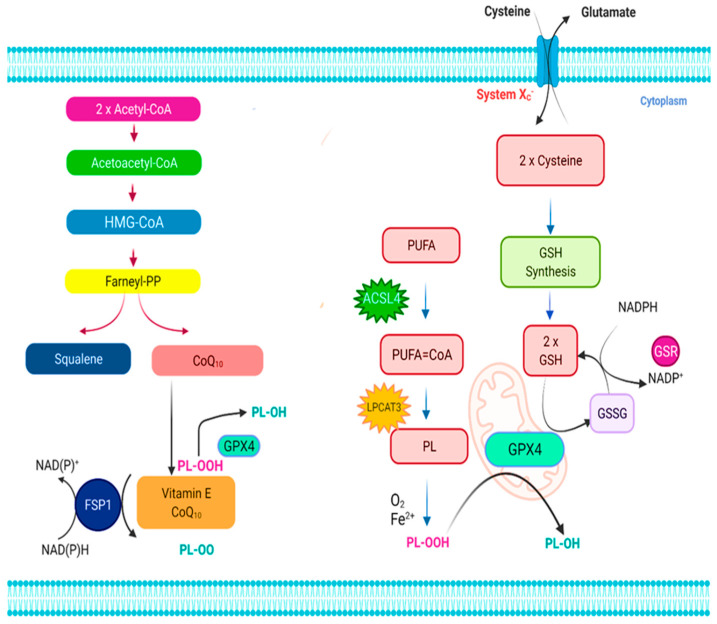Figure 1.
The ferroptosis signaling pathway. Ferroptosis is regulated by two major regulatory mechanisms, namely the cystine/glutathione (GSH)/glutathione peroxidase 4 (Gpx4) axis and the NAD(P)H/ferroptosis suppressor protein 1 (FSP1)/ubiquinone (CoQ10) axis. The cystine/glutathione (GSH)/glutathione peroxidase 4 (Gpx4) axis regulates ferroptosis suppression through the cystine/GSH/Gpx4 nexus is accomplished by the main stages of cystine absorption and decrease, respectively, GSH production, and Gpx4 activation, among others, and the conversion of oxidized phospholipids (PLs) into their homologous alcohols (PL-OH) by the enzyme Gpx4, which uses GSH as a substrate. It has been shown that the enzymes acyl-CoA synthetase long-chain family member 4 (ACSL4) as well as lysophosphatidylcholine acyltransferase 3 (LPCAT3) are involved in integrating polyunsaturated fatty acids (PUFAs) within cellular membranes, making them susceptible to ferroptosis activation. As a result, the oxidation of lipid bilayers may proceed enzymatically and/or nonenzymatically by auto-oxidation, depending on the situation. The antiferroptotic activity of FSP1 in the NAD(P)H/FSP1/CoQ10 system is attributed to its oxidoreductase activity, which is activated by converting extramitochondrial CoQ10 to ubiquinol using NAD(P)H/H+. To avoid lipid peroxidation, ubiquinol either reduces lipid radicals (PL-OO) directly or indirectly via the use of vitamin E (-tocopherol) must be present. Apart from that, the mevalonate pathway produces precursors for CoQ10 and squalene, the latter of which is beneficial in the prevention of ferroptosis because of its antioxidant action.

